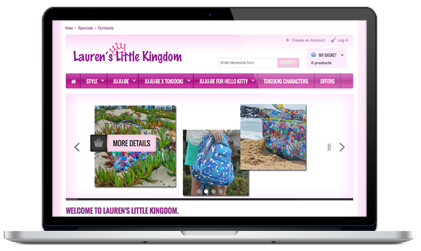Ultimate Guide to Building Your Restaurant Website: A Step-by-Step Approach

In today’s digital era, having a strong online presence is essential for any restaurant. A well-designed website is the first step in attracting customers, showcasing your menu, and keeping diners informed about special events or promotions. With a dedicated restaurant website builder, creating an attractive, functional site is easier than ever. Here’s everything you need to know to build a website that will serve as a valuable marketing tool for your restaurant.
1. Choose the Right Restaurant Website Builder
The first step is selecting a website builder that suits your needs. Look for platforms that provide features tailored for restaurants, such as:
- Menu Templates: Showcase your food and drink offerings with beautifully designed templates.
- Reservation System: Allow customers to book a table directly on your website.
- Online Ordering and Delivery Integration: Offer easy access to delivery or pick-up services.
- Event Calendar: Display upcoming events, special dinners, or live music nights.
Popular restaurant website builders include Squarespace, Wix, and WordPress with restaurant-focused plugins. Each has unique strengths, so take time to review their offerings and choose the one that best fits your requirements.
2. Define Your Brand and Website Goals
Think about what you want to convey to your visitors. Do you want to emphasize a cozy, family-friendly vibe or a sophisticated dining experience? Define your brand’s identity and keep it consistent across your website by choosing colors, fonts, and images that match your restaurant’s aesthetic.
Consider your goals:
- Drive Reservations: Make sure the reservation button is prominently displayed.
- Promote Online Orders: Offer easy-to-use online ordering to boost sales.
- Engage on Social Media: Link your Instagram and Facebook profiles to build a community around your brand.
3. Create an Engaging Homepage
Your homepage is the first impression of your restaurant, so make it count! Some essential elements include:
- High-Quality Photos: Images of your best dishes, interior, and atmosphere set the tone.
- Introduction to Your Story: Tell visitors about the inspiration behind your restaurant and what sets it apart.
- Clear Calls to Action (CTAs): Make it easy for customers to reserve, order, or view your menu.
4. Design an Intuitive Menu Page
One of the most important features of a restaurant website is the menu. Ensure it’s easy to read and mobile-friendly. Some tips:
- Use Categories: Divide your menu into categories like appetizers, mains, desserts, and beverages.
- Showcase Specials: If you have signature dishes or seasonal specials, make them stand out.
- Include Prices: Transparency is key to ensuring your guests know what to expect.
5. Integrate a Reservation System
Many website builders offer built-in reservation functionality, but you can also integrate third-party services like OpenTable or Resy. A seamless reservation system makes it easier for customers to book a table without having to call in.
6. Set Up Online Ordering and Delivery
In today’s convenience-driven world, online ordering and delivery are essential. Check if your website builder offers e-commerce integrations, or use plugins to connect with popular platforms like Grubhub or Uber Eats. A smooth online ordering system can significantly increase your reach and boost revenue.
7. Optimize for Mobile Users
Most diners will visit your website from their mobile devices. To ensure a great user experience, make sure your website:
- Loads Quickly: Large images or videos should be optimized for fast loading.
- Has Clear Navigation: Avoid complex menus and keep CTAs accessible.
- Is Touch-Friendly: Buttons and links should be easy to tap on smaller screens.
8. Implement SEO for Local Search
Optimizing your website for search engines will increase your visibility to local diners. Here are some SEO tips:
- Use Local Keywords: Include location-specific keywords, such as “Italian restaurant in [City].”
- Add Location and Contact Information: Make sure your address and phone number are easy to find.
- Claim Your Google Business Profile: Link it to your website and keep the information updated.
9. Add a Blog or News Section
A blog or news section is an excellent way to engage with your audience and boost your SEO. You could post updates on menu changes, share recipes, or announce special events. Just a few engaging posts each month can go a long way in keeping your audience interested and your website relevant.
10. Collect Feedback and Monitor Performance
Customer feedback is crucial for improvement. Consider adding a simple feedback form or link to your Google or Yelp page. Monitoring website performance through Google Analytics or a similar tool will give you insight into visitor behavior and help you make data-driven improvements.





